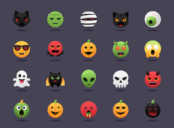Outlook Web App: A Comprehensive Guide for Tech Enthusiasts

Introduction to Outlook Web App and Its Key Features
Outlook Web App, also known as OWA, is a web-based email client developed by Microsoft. It provides users with access to their Microsoft Exchange Server email accounts through a web browser. With an intuitive interface and a plethora of features, Outlook Web App offers a seamless experience for managing emails, calendars, contacts, and tasks.
Key Features of Outlook Web App:

1. Unified Inbox: Outlook Web App allows users to access multiple email accounts from different providers, such as Microsoft Exchange, Office 365, and Outlook.com, in a single inbox. This ensures efficient email management without the hassle of switching between different accounts.
2. Rich Text Formatting: Users can compose emails with various formatting options, including bold, italics, underline, font styles, and color customization. This enhances the visual appeal of emails and allows for better communication.
3. Advanced Email Organization: Outlook Web App offers a range of features to organize and manage emails effectively. Users can create folders, apply filters, set up rules, and use flags to prioritize and categorize emails. It also provides an advanced search functionality to quickly find specific emails.
4. Calendar Integration: The calendar feature in Outlook Web App enables users to schedule and manage appointments, meetings, and events. It supports features like reminders, recurring events, and availability status. Additionally, users can share their calendars with colleagues for seamless collaboration.
5. Contacts and Address Book: Outlook Web App offers a comprehensive address book to store and manage contacts. Users can create contact groups, import/export contacts, and synchronize them across devices. The auto-complete feature suggests contacts based on the recipient’s name or email address, saving time and minimizing errors.
6. Task Management: Outlook Web App includes a task manager to create, assign, and track tasks. Users can set due dates, priorities, and reminders for tasks, ensuring efficient task management and completion.
Historical Evolution of Outlook Web App
Outlook Web App has undergone significant development and improvements over time to keep up with evolving technology and user demands. Let’s take a look at its historical journey:
1. Exchange Web Connect (EWC): Introduced in 1999 with the release of Exchange Server 5.5, EWC was the first web-based interface for accessing Exchange email accounts through a web browser. It provided basic email functionalities but lacked advanced features.
2. Outlook Web Access (OWA): With the release of Exchange Server 2000, Microsoft rebranded EWC as OWA. This version brought significant enhancements, including a more intuitive user interface, improved email organization features, and integration with other Microsoft Office applications.
3. Outlook Web App (OWA): In 2010, with the release of Exchange Server 2010, Microsoft introduced Outlook Web App as the next-generation web-based email client. This version featured a sleek and modern interface, enhanced calendar integration, improved performance, and better compatibility across different browsers.
4. Outlook on the Web: In 2015, Microsoft rebranded Outlook Web App as Outlook on the Web. This version introduced a responsive design, making it accessible and optimized for various devices, including smartphones and tablets. The interface became more touch-friendly, offering a seamless experience on mobile devices.
5. Outlook Web App (Latest Version): In recent years, Outlook Web App has undergone continuous updates and improvements, offering a range of new features and enhancements. These include focused inbox, clutter management, @mentions, email encryption, and improved integration with Microsoft’s cloud services.
Conclusion
Outlook Web App is a powerful web-based email client that provides users with a seamless experience for managing emails, calendars, contacts, and tasks. With its extensive features and continuous evolution, it remains a preferred choice for tech enthusiasts seeking efficient email management. Whether accessing it on a desktop or mobile device, Outlook Web App offers a user-friendly interface and a range of functionalities to enhance productivity. Stay connected, organized, and productive with Outlook Web App!





















